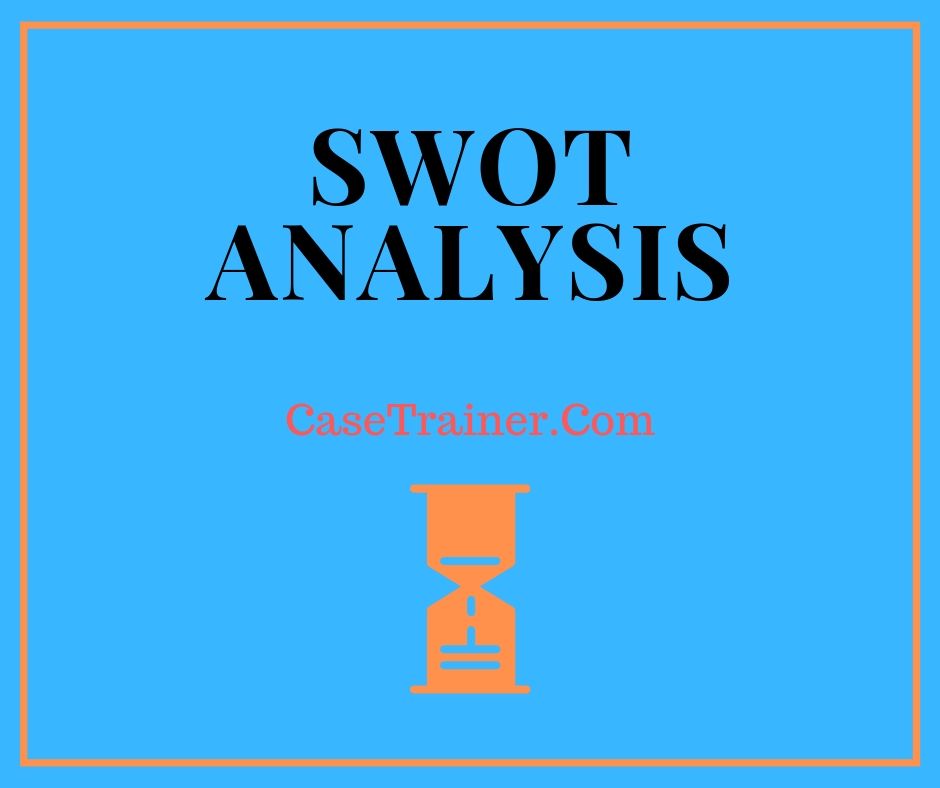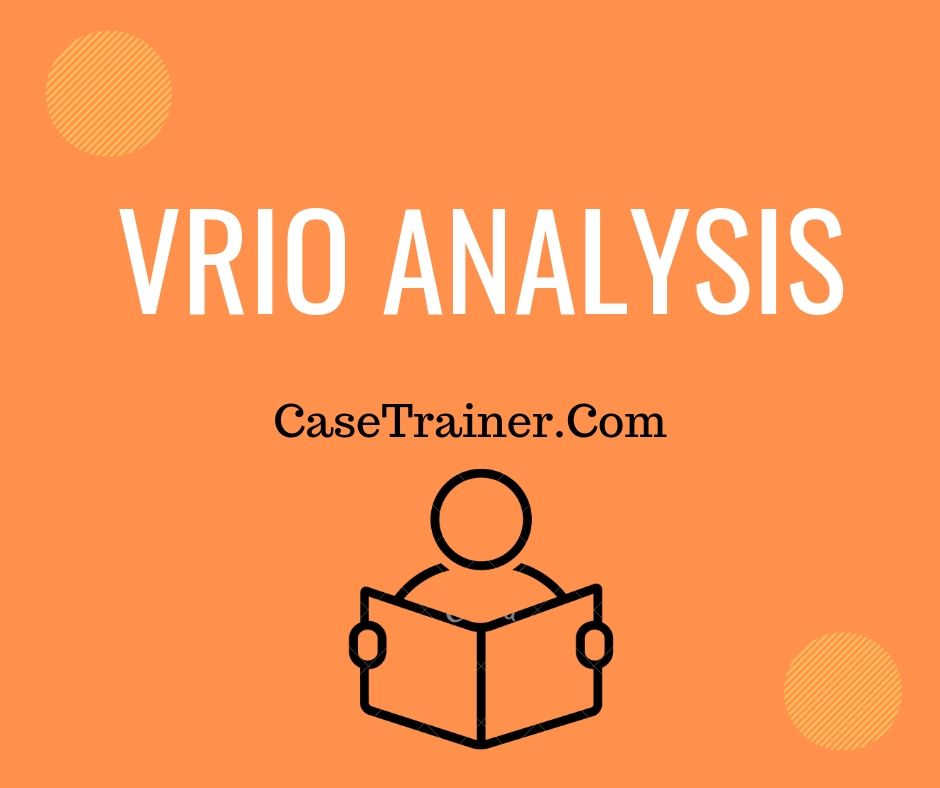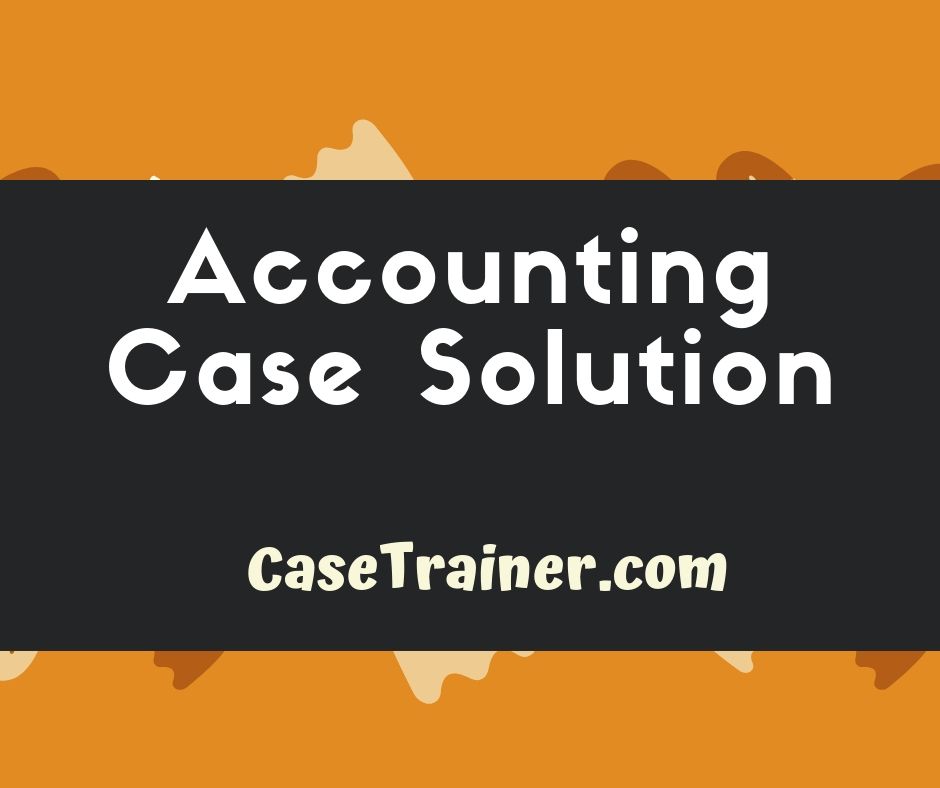Value Creation Architectures And Competitive Advantage Lessons From The European Automobile Industry Case Study Solution and Analysis
Intro
Value Creation Architectures And Competitive Advantage Lessons From The European Automobile Industry Case Study Help is currently one of the greatest food chains worldwide. It was established by Henri Value Creation Architectures And Competitive Advantage Lessons From The European Automobile Industry in 1866, a German Pharmacist who first released "Farine Lactee"; a mix of flour and milk to decrease and feed infants death rate. At the exact same time, the Page siblings from Switzerland also discovered The Anglo-Swiss Condensed Milk Company. The 2 ended up being rivals at first however later combined in 1905, resulting in the birth of Value Creation Architectures And Competitive Advantage Lessons From The European Automobile Industry.
Value Creation Architectures And Competitive Advantage Lessons From The European Automobile Industry is now a transnational company. Unlike other multinational business, it has senior executives from different nations and tries to make choices considering the whole world. Value Creation Architectures And Competitive Advantage Lessons From The European Automobile Industry Case Study Solution presently has more than 500 factories around the world and a network spread throughout 86 nations.
Function
The purpose of Value Creation Architectures And Competitive Advantage Lessons From The European Automobile Industry Corporation is to boost the quality of life of individuals by playing its part and providing healthy food. It wishes to assist the world in forming a healthy and much better future for it. It also wishes to motivate people to live a healthy life. While ensuring that the company is prospering in the long run, that's how it plays its part for a much better and healthy future
Vision
Nestlé's vision is to supply its consumers with food that is healthy, high in quality and safe to consume. It wishes to be innovative and concurrently comprehend the requirements and requirements of its clients. Its vision is to grow fast and provide products that would satisfy the needs of each age group. Value Creation Architectures And Competitive Advantage Lessons From The European Automobile Industry visualizes to develop a trained workforce which would assist the business to grow.
Mission.
Nestlé's objective is that as presently, it is the leading business in the food market, it thinks in 'Good Food, Excellent Life". Its mission is to supply its customers with a range of options that are healthy and finest in taste as well. It is focused on supplying the very best food to its clients throughout the day and night.
Products.

Value Creation Architectures And Competitive Advantage Lessons From The European Automobile Industry has a wide range of items that it offers to its clients. In 2011, Value Creation Architectures And Competitive Advantage Lessons From The European Automobile Industry was noted as the most rewarding company.
Objectives and Goals.
• Bearing in mind the vision and mission of the corporation, the company has actually set its goals and objectives. These objectives and objectives are noted below.
• One objective of the company is to reach absolutely no land fill status. It is working toward zero waste, where no waste of the factory is landfilled. It encourages its employees to take the most out of the by-products. (Value Creation Architectures And Competitive Advantage Lessons From The European Automobile Industry, aboutus, 2017).
• Another goal of Value Creation Architectures And Competitive Advantage Lessons From The European Automobile Industry is to lose minimum food during production. Most often, the food produced is squandered even prior to it reaches the consumers.
• Another thing that Value Creation Architectures And Competitive Advantage Lessons From The European Automobile Industry is dealing with is to improve its packaging in such a way that it would assist it to decrease those problems and would likewise guarantee the delivery of high quality of its products to its consumers.
• Meet global requirements of the environment.
• Build a relationship based upon trust with its customers, service partners, employees, and federal government.
Crucial Concerns.
Just Recently, Value Creation Architectures And Competitive Advantage Lessons From The European Automobile Industry Business is focusing more towards the strategy of NHW and investing more of its profits on the R&D innovation. The nation is investing more on mergers and acquisitions to support its NHW strategy. The target of the company is not accomplished as the sales were anticipated to grow greater at the rate of 10% per year and the operating margins to increase by 20%, provided in Exhibit H. There is a need to focus more on the sales then the development technology. Otherwise, it might lead to the declined revenue rate. (Henderson, 2012).
Situational Analysis.

Analysis of Present Strategy, Vision and Goals.
The present Value Creation Architectures And Competitive Advantage Lessons From The European Automobile Industry method is based on the principle of Nutritious, Health and Health (NHW). This strategy handles the concept to bringing modification in the customer choices about food and making the food stuff healthier concerning about the health concerns.
The vision of this method is based upon the secret technique i.e. 60/40+ which merely implies that the items will have a score of 60% on the basis of taste and 40% is based on its dietary value. The products will be manufactured with extra nutritional value in contrast to all other items in market gaining it a plus on its nutritional material.
This method was adopted to bring more nutritious plus yummy foods and drinks in market than ever. In competitors with other business, with an intention of retaining its trust over customers as Value Creation Architectures And Competitive Advantage Lessons From The European Automobile Industry Business has acquired more trusted by costumers.
Microenvironment Analysis (PESTEL Analysis).
The analysis utilized to measure the position of company in the market is done by using PESTLE analysis, given in Exhibition A. Value Creation Architectures And Competitive Advantage Lessons From The European Automobile Industry works under the regulations and guidelines directed by federal government and food authority. The business is more focused on its services and products to ensure about the item quality and security. This analysis will assist in understanding environment of external market in the worldwide food and drink industries. (Parera, 2017).
Political.

The political impact on the business is greatly influenced by the government laws and guidelines. The company has to satisfy its requirements provided by government otherwise it has to pay fine. Value Creation Architectures And Competitive Advantage Lessons From The European Automobile Industry is greatly supported by Federal government to fulfill all the requirements of standards like acts of health and safety. In efforts to produce excellent food, Value Creation Architectures And Competitive Advantage Lessons From The European Automobile Industry is altering the standards of food and drink manufacturing. This might trigger the violation of governmental rules and guidelines.
Economic.
Initiation of the business where the capital earnings of each private matters for the increased net sale as this differs country-to-country. The economy of the Value Creation Architectures And Competitive Advantage Lessons From The European Automobile Industry Company in U.S. is growing year by year with variable items launch specifically focusing on the nutritional food for babies.
Social.
The social environment keeps changing with regard to time like the mindset of the consumer in addition to their lifestyles. Any product or service of any company can not be successful until the company is not concerned about the living system of the consumer. Value Creation Architectures And Competitive Advantage Lessons From The European Automobile Industry is taking steps to meet its objectives as the world remains in search of tasty and healthy food.
Technological.
In the development of company, tactical procedures are rather compulsory. Value Creation Architectures And Competitive Advantage Lessons From The European Automobile Industry is one of the top well-known multinational firm and by time it buys different departments to take its items to new level. Value Creation Architectures And Competitive Advantage Lessons From The European Automobile Industry is spending more on its R&D to make its items healthier and healthy offering customers with health advantages.
Legal.
There is no such effect of legal factors of Value Creation Architectures And Competitive Advantage Lessons From The European Automobile Industry as it is more worried over its policies and laws.
Environmental
Value Creation Architectures And Competitive Advantage Lessons From The European Automobile Industry, in regards to environmental effect is dedicated to work in environment-friendly environment with preservation of the natural resources and energy. As due to the production of larger variety of products there may be a hazard if the resources utilized are recyclable or not.
Competitive Forces Analysis (Porter's 5 Forces Model).
Value Creation Architectures And Competitive Advantage Lessons From The European Automobile Industry Case Study Solution has actually gotten a number of business that helped it in diversity and growth of its item's profile. This is the extensive description of the Porter's design of five forces of Value Creation Architectures And Competitive Advantage Lessons From The European Automobile Industry Company, given in Exhibit B.
Competitiveness.
There is extreme competition in the market of food and drinks. Value Creation Architectures And Competitive Advantage Lessons From The European Automobile Industry is one of the top business in this competitive industry with a number of strong competitors like Unilever, Kraft foods and Group DANONE. Value Creation Architectures And Competitive Advantage Lessons From The European Automobile Industry is running well in this race for last 150 years. Each company has a certain share of market. This rivalry is not simply limited to the price of the product but also for quality, development and variation. Every industry is aiming hard for the upkeep of their market share. Nevertheless, the competitors of other companies with Value Creation Architectures And Competitive Advantage Lessons From The European Automobile Industry Case Study Help is rather high.

Danger of New Entrants.
A number of barriers are there for the new entrants to happen in the customer food industry. Just a few entrants be successful in this market as there is a need to comprehend the consumer requirement which needs time while recent rivals are well aware and has actually advanced with the consumer commitment over their products with time. There is low risk of brand-new entrants to Value Creation Architectures And Competitive Advantage Lessons From The European Automobile Industry as it has rather large network of distribution globally controling with well-reputed image.
Bargaining Power of Suppliers.
In the food and beverage industry, Value Creation Architectures And Competitive Advantage Lessons From The European Automobile Industry Case Study Analysis owes the biggest share of market needing greater number of supply chains. In response, Value Creation Architectures And Competitive Advantage Lessons From The European Automobile Industry has actually likewise been concerned for its suppliers as it thinks in long-lasting relations.
Bargaining Power of Purchasers.
Thus, Value Creation Architectures And Competitive Advantage Lessons From The European Automobile Industry makes sure to keep its clients pleased. This has led Value Creation Architectures And Competitive Advantage Lessons From The European Automobile Industry to be one of the loyal business in eyes of its purchasers.
Hazard of Substitutes.
There has been a terrific danger of replacements as there are alternatives of some of the Nestlé's products such as boiled water and pasteurized milk. There has also been a claim that a few of its products are not safe to use leading to the decreased sale. Hence, Value Creation Architectures And Competitive Advantage Lessons From The European Automobile Industry started highlighting the health advantages of its products to cope up with the substitutes.
Competitor Analysis.
Value Creation Architectures And Competitive Advantage Lessons From The European Automobile Industry Case Study Analysis covers many of the popular customer brand names like Package Kat and Nescafe and so on. About 29 brand names amongst all of its brand names, each brand made a revenue of about $1billion in 2010. Its huge part of sale remains in North America making up about 42% of its all sales. In Europe and U.S. the leading significant brands offered by Value Creation Architectures And Competitive Advantage Lessons From The European Automobile Industry in these states have a great credible share of market. Also Value Creation Architectures And Competitive Advantage Lessons From The European Automobile Industry, Unilever and DANONE are 2 big industries of food and drinks in addition to its main rivals. In the year 2010, Value Creation Architectures And Competitive Advantage Lessons From The European Automobile Industry had earned its annual earnings by 26% increase because of its increased food and drinks sale particularly in cooking stuff, ice-cream, beverages based upon tea, and frozen food. On the other hand, DANONE, due to the increasing costs of shares resulting a boost of 38% in its earnings. Value Creation Architectures And Competitive Advantage Lessons From The European Automobile Industry Case Study Help lowered its sales cost by the adjustment of a brand-new accounting procedure. Unilever has number of workers about 230,000 and functions in more than 160 countries and its London headquarter. It has become the second largest food and beverage market in the West Europe with a market share of about 8.6% with only a difference of 0.3 points with Value Creation Architectures And Competitive Advantage Lessons From The European Automobile Industry. Unilever shares a market share of about 7.7 with Value Creation Architectures And Competitive Advantage Lessons From The European Automobile Industry ending up being ranking and first DANONE as 3rd. Value Creation Architectures And Competitive Advantage Lessons From The European Automobile Industry attracts local costumers by its low cost of the product with the regional taste of the products preserving its first place in the global market. Value Creation Architectures And Competitive Advantage Lessons From The European Automobile Industry company has about 280,000 employees and functions in more than 197 countries edging its competitors in lots of areas. Value Creation Architectures And Competitive Advantage Lessons From The European Automobile Industry has actually also lowered its cost of supply by presenting E-marketing in contrast to its rivals.
Keep in mind: A quick contrast of Value Creation Architectures And Competitive Advantage Lessons From The European Automobile Industry with its close competitors is given up Exhibition C.
SWOT Analysis.
The internal analysis and external of the business also can be done through SWOT Analysis, summed up in the Exhibit F.
Strengths.
• Value Creation Architectures And Competitive Advantage Lessons From The European Automobile Industry has an experience of about 140 years, enabling business to better perform, in different scenarios.
• Nestlé's has existence in about 86 countries, making it a global leader in Food and Beverage Market.
• Value Creation Architectures And Competitive Advantage Lessons From The European Automobile Industry has more than 2000 brand names, which increase the circle of its target consumers. These brands include baby foods, animal food, confectionary products, drinks and so on. Famous brand names of Value Creation Architectures And Competitive Advantage Lessons From The European Automobile Industry consist of; Maggi, Kit-Kat, Nescafe, etc.
• Value Creation Architectures And Competitive Advantage Lessons From The European Automobile Industry Case Study Solution has big amount of spending on R&D as compare to its competitors, making the business to launch more healthy and ingenious items. This innovation provides the business a high competitive position in long term.
• After embracing its NHW Technique, the business has done large amount of mergers and acquisitions which increase the sales growth and enhance market position of Value Creation Architectures And Competitive Advantage Lessons From The European Automobile Industry.
• Value Creation Architectures And Competitive Advantage Lessons From The European Automobile Industry is a widely known brand name with high consumer's loyalty and brand recall. This brand name commitment of consumers increases the chances of easy market adoption of numerous new brands of Value Creation Architectures And Competitive Advantage Lessons From The European Automobile Industry.
Weak points.
• Acquisitions of those company, like; Kraft frozen Pizza business can offer an unfavorable signal to Value Creation Architectures And Competitive Advantage Lessons From The European Automobile Industry consumers about their compromise over their core proficiency of healthier foods.
• The development I sales as compare to the company's financial investment in NHW Method are quite various. It will take long to alter the perception of people ab out Value Creation Architectures And Competitive Advantage Lessons From The European Automobile Industry as a business offering healthy and healthy items.
Opportunities.
• Presenting more health associated items enables the company to record the marketplace in which customers are quite mindful about health.
• Developing countries like India and China has largest markets in the world. Hence expanding the marketplace towards establishing nations can increase the Value Creation Architectures And Competitive Advantage Lessons From The European Automobile Industry service by increasing sales volume.
• Continue acquisitions and joint ventures increases the market share of the business.
• Increased relationships with schools, hotel chains, restaurants etc. can likewise increase the variety of Value Creation Architectures And Competitive Advantage Lessons From The European Automobile Industry Case Study Analysis customers. For instance, instructors can recommend their trainees to buy Value Creation Architectures And Competitive Advantage Lessons From The European Automobile Industry items.
Hazards.
• Economic instability in countries, which are the potential markets for Value Creation Architectures And Competitive Advantage Lessons From The European Automobile Industry, can produce several issues for Value Creation Architectures And Competitive Advantage Lessons From The European Automobile Industry.
• Shifting of items from typical to much healthier, results in additional costs and can lead to decrease business's revenue margins.
• As Value Creation Architectures And Competitive Advantage Lessons From The European Automobile Industry has a complex supply chain, therefore failure of any of the level of supply chain can lead the business to deal with certain issues.
Segmentation Analysis
Demographic Division
The market division of Value Creation Architectures And Competitive Advantage Lessons From The European Automobile Industry Case Study Analysis is based upon 4 factors; age, occupation, gender and earnings. Value Creation Architectures And Competitive Advantage Lessons From The European Automobile Industry produces numerous items related to babies i.e. Cerelac, Nido, and so on and associated to grownups i.e. confectionary items. Value Creation Architectures And Competitive Advantage Lessons From The European Automobile Industry items are quite cost effective by practically all levels, but its significant targeted customers, in terms of earnings level are middle and upper middle level clients.
Geographical Segmentation
Geographical segmentation of Value Creation Architectures And Competitive Advantage Lessons From The European Automobile Industry Case Study Analysis is composed of its presence in practically 86 nations. Its geographical segmentation is based upon 2 primary elements i.e. typical income level of the customer as well as the climate of the area. For instance, Singapore Value Creation Architectures And Competitive Advantage Lessons From The European Automobile Industry Company's division is done on the basis of the weather of the area i.e. hot, cold or warm.
Psychographic Segmentation
Psychographic division of Value Creation Architectures And Competitive Advantage Lessons From The European Automobile Industry is based upon the character and life style of the customer. Value Creation Architectures And Competitive Advantage Lessons From The European Automobile Industry 3 in 1 Coffee target those customers whose life design is rather busy and don't have much time.
Behavioral Segmentation
Value Creation Architectures And Competitive Advantage Lessons From The European Automobile Industry Case Solution behavioral division is based upon the attitude understanding and awareness of the client. For instance its extremely nutritious products target those customers who have a health mindful attitude towards their usages.
VRIO Analysis
The VRIO analysis of Value Creation Architectures And Competitive Advantage Lessons From The European Automobile Industry Company is a broad variety analysis offering the organization with a possibility to get a practical competitive advantage versus its rivals in the food and beverage industry, summarized in Exhibit I.
Valuable
The resources utilized by the Value Creation Architectures And Competitive Advantage Lessons From The European Automobile Industry business are valuable for the business or not. Such as the resources like finance, human resources, management of operations and specialists in marketing. This are some of the key valuable factors of for the recognition of competitive advantage.
Rare
The important resources used by Value Creation Architectures And Competitive Advantage Lessons From The European Automobile Industry are even unusual or expensive. If these resources are typically discovered that it would be easier for the competitors and the new competitors in the market to effortlessly relocate competitors.
Replica
The imitation procedure is costly for the competitors of Value Creation Architectures And Competitive Advantage Lessons From The European Automobile Industry Case Analysis Business. However, it can be done just in two various techniques i.e. product duplication which is produced and produced by Value Creation Architectures And Competitive Advantage Lessons From The European Automobile Industry Business and launching of the substitute of the products with changing expense. This increases the threat of disturbance to the recent structure of the industry.
Company
This element of VRIO analysis deals with the compatibility of the business to place in the market making efficient usage of its important resources which are hard to imitate. Regularly, the development of management is completely dependent on the firm's execution strategy and group. Therefore, this polishes the skills of the firm by time based on the decisions made by company for the progression of its tactical capitals.
Quantitative Analysis
R&D Costs as a portion of sales are decreasing with increasing actual quantity of spending shows that the sales are increasing at a higher rate than its R&D spending, and enable the business to more spend on R&D.
Net Revenue Margin is increasing while R&D as a percentage of sales is declining. This indication likewise shows a green light to the R&D costs, acquisitions and mergers.
Debt ratio of the company is increasing due to its spending on mergers, acquisitions and R&D advancement rather than payment of debts. This increasing debt ratio position a threat of default of Value Creation Architectures And Competitive Advantage Lessons From The European Automobile Industry to its financiers and could lead a declining share prices. In terms of increasing financial obligation ratio, the company needs to not spend much on R&D and needs to pay its present debts to decrease the risk for financiers.
The increasing danger of investors with increasing financial obligation ratio and declining share costs can be observed by big decline of EPS of Value Creation Architectures And Competitive Advantage Lessons From The European Automobile Industry Case Solution stocks.
The sales development of company is also low as compare to its mergers and acquisitions due to slow understanding structure of customers. This slow growth likewise impede company to further invest in its mergers and acquisitions.( Value Creation Architectures And Competitive Advantage Lessons From The European Automobile Industry, Value Creation Architectures And Competitive Advantage Lessons From The European Automobile Industry Financial Reports, 2006-2010).
Note: All the above analysis is done on the basis of graphs and calculations given up the Exhibits D and E.
TWOS Analysis.
2 analysis can be utilized to obtain different methods based upon the SWOT Analysis offered above. A short summary of TWOS Analysis is given in Display H.
Techniques to make use of Opportunities utilizing Strengths.
Value Creation Architectures And Competitive Advantage Lessons From The European Automobile Industry Case Analysis should introduce more ingenious items by large amount of R&D Costs and mergers and acquisitions. It could increase the marketplace share of Value Creation Architectures And Competitive Advantage Lessons From The European Automobile Industry and increase the profit margins for the company. It might likewise supply Value Creation Architectures And Competitive Advantage Lessons From The European Automobile Industry a long term competitive benefit over its rivals.
The worldwide growth of Value Creation Architectures And Competitive Advantage Lessons From The European Automobile Industry need to be concentrated on market capturing of developing countries by growth, attracting more clients through customer's commitment. As establishing nations are more populous than developed countries, it could increase the customer circle of Value Creation Architectures And Competitive Advantage Lessons From The European Automobile Industry.
Methods to Get Rid Of Weak Points to Make Use Of Opportunities.
Value Creation Architectures And Competitive Advantage Lessons From The European Automobile Industry Case Solution needs to do mindful acquisition and merger of companies, as it could impact the consumer's and society's perceptions about Value Creation Architectures And Competitive Advantage Lessons From The European Automobile Industry. It ought to merge and acquire with those companies which have a market credibility of healthy and nutritious companies. It would improve the perceptions of customers about Value Creation Architectures And Competitive Advantage Lessons From The European Automobile Industry.
Value Creation Architectures And Competitive Advantage Lessons From The European Automobile Industry needs to not only spend its R&D on innovation, instead of it ought to likewise concentrate on the R&D costs over assessment of expense of numerous nutritious items. This would increase expense efficiency of its items, which will result in increasing its sales, due to decreasing rates, and margins.
Strategies to use strengths to overcome threats.
Value Creation Architectures And Competitive Advantage Lessons From The European Automobile Industry must move to not just developing however likewise to developed countries. It should broaden its circle to various countries like Unilever which operates in about 170 plus nations.
Strategies to conquer weaknesses to prevent hazards.
Value Creation Architectures And Competitive Advantage Lessons From The European Automobile Industry ought to sensibly manage its acquisitions to avoid the danger of misunderstanding from the consumers about Value Creation Architectures And Competitive Advantage Lessons From The European Automobile Industry. It should get and combine with those nations having a goodwill of being a healthy company in the market. This would not just improve the understanding of consumers about Value Creation Architectures And Competitive Advantage Lessons From The European Automobile Industry but would likewise increase the sales, profit margins and market share of Value Creation Architectures And Competitive Advantage Lessons From The European Automobile Industry. It would likewise enable the business to use its possible resources effectively on its other operations instead of acquisitions of those companies slowing the NHW method growth.
Alternatives.
In order to sustain the brand in the market and keep the consumer undamaged with the brand, there are 2 options:.
Alternative: 1.
The Company ought to invest more on acquisitions than on the R&D.
Pros:.
1. Acquisitions would increase overall assets of the business, increasing the wealth of the business. Costs on R&D would be sunk expense.
2. The company can resell the obtained systems in the market, if it fails to execute its method. However, quantity invest in the R&D might not be revived, and it will be thought about completely sunk expense, if it do not offer prospective results.
3. Investing in R&D provide sluggish development in sales, as it takes long period of time to present a product. Acquisitions provide quick results, as it offer the company already established item, which can be marketed soon after the acquisition.
Cons:.
1. Acquisition of business's which do not fit with the company's worths like Kraftz foods can lead the business to face misconception of consumers about Value Creation Architectures And Competitive Advantage Lessons From The European Automobile Industry core values of healthy and healthy items.
2. Big spending on acquisitions than R&D would send out a signal of business's ineffectiveness of developing ingenious products, and would results in consumer's dissatisfaction.
3. Large acquisitions than R&D would extend the product line of the business by the products which are currently present in the market, making business unable to present brand-new innovative items.
Option: 2
The Business should invest more on its R&D rather than acquisitions.
Pros:
1. It would allow the business to produce more innovative items.
2. It would provide the company a strong competitive position in the market.
3. It would make it possible for the business to increase its targeted customers by introducing those items which can be provided to an entirely brand-new market segment.
4. Ingenious items will supply long term benefits and high market share in long run.
Cons:
1. It would reduce the profit margins of the business.
2. In case of failure, the entire spending on R&D would be thought about as sunk expense, and would impact the business at big. The danger is not when it comes to acquisitions.
3. It would not increase the wealth of company, which might provide an unfavorable signal to the financiers, and could result I declining stock rates.
Alternative 3:
Continue its acquisitions and mergers with substantial spending on in R&D Program.
Pros:
1. It would permit the business to present brand-new innovative items with less threat of converting the spending on R&D into sunk cost.
2. It would supply a favorable signal to the financiers, as the general possessions of the business would increase with its significant R&D costs.
3. It would not impact the profit margins of the company at a large rate as compare to alternative 2.
4. It would offer the business a strong long term market position in terms of the company's overall wealth in addition to in regards to innovative products.
Cons:
1. Danger of conversion of R&D spending into sunk cost, greater than alternative 1 lower than alternative 2.
2. Threat of mistaken belief about the acquisitions, greater than alternative 2 and lesser than option 1.
3. Introduction of less variety of innovative products than alternative 2 and high variety of ingenious products than alternative 1.
Suggestion
With the deep analysis of the above alternatives, it is recommended that the business should select the alternative 3 in order to preserve a competitive position in the long run. As the alternative 3 would enable the company to not only present new and innovative products in the market it would also lower the high expenditures on R&D under alternative 2 and increase the earnings margins. It would make it possible for the business to increase its share prices also, as financiers want to invest more in companies with substantial R&D costs and increase in the overall worth of the company.
Action and execution Method
Technique can be carried out successfully by establishing certain short term along with long term strategies. These strategies might be as follows;
Short Term Strategy (0-1 year).
• Under the short term strategy Value Creation Architectures And Competitive Advantage Lessons From The European Automobile Industry Case Analysis should perform numerous activities to implement its NHW technique efficiently. These activities are as follows;.
• Get the audit of its brand portfolio done, to analyze the core selling brands, which generate most of its income.
• Evaluate the existing target market as well as the marketplace sector which is not include in the business's circle.
• Examine the current financial data to measure the quantity that needs to be invested in the R&D and acquisitions.
• Evaluate the potential financiers and their nature, i.e. do they desire long term benefits (capital gain), or the desire early profits (dividend). It would let the company to understand that just how much quantity must be invested in R&D.
Mid Term Strategy (1-5 years).
• Acquire those organizations in which the company has prospective experience to deal with. Obtain most favorable organizations with a strong commitment to health, to build the client's understandings in the right direction.
• Focus more on acquisitions than R&D to construct the base in the consumer's mind about Value Creation Architectures And Competitive Advantage Lessons From The European Automobile Industry worths and vision and to prevent potential threat of sunk cost.
Long Term Strategy (1-10 years).
• Acquire companies with health in addition to taste aspect, as the base for the Value Creation Architectures And Competitive Advantage Lessons From The European Automobile Industry as a business producing healthy items has been developed under midterm plan and now the company could move towards taste element also to comprehend the customers, which focus more on taste instead of health.
• Be more aggressive towards R&D than the acquisitions, as it is the considerable time to build new items.
Conclusion.

Value Creation Architectures And Competitive Advantage Lessons From The European Automobile Industry Case Analysis has established significant market share and brand identity in the metropolitan markets, it is advised that the company ought to focus on the rural locations in terms of developing brand name awareness, equity, and loyalty, such can be done by developing a specific brand name allocation technique through trade marketing methods, that draw clear distinction between Value Creation Architectures And Competitive Advantage Lessons From The European Automobile Industry items and other competitor products. This will allow the company to establish brand name equity for recently introduced and currently produced products on a greater platform, making the effective usage of resources and brand image in the market.

